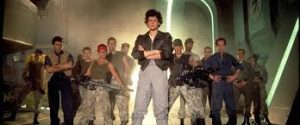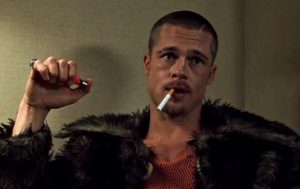The course of the semester has certainly been tumultuous. However, in reference to this course this semester has been one of growth and learning. Engl 301 has give the opportunity to develop my analytical skills and deepen the vocabulary I have available to discuss and explain the cultural impact as well as the rhetorical tools used in pop culture to deepen its impact.
Historically, rhetoric was hemmed in with a definition that limited the scope of rhetoric to verbal expression only. The school of verbal rhetoric is dominated by the ancient Greeks and later on would come to include written rhetoric as well. Both schools of rhetoric focus on strategies, demographics, and perceived major elements of communication in order to best sway an audience to a certain way of thinking. With the rise of visual media in the 20th century a definition of modern rhetoric would include aspects of this new form of media and expanding the field to include the old standards, such as focusing on logos, pathos, and ethos, while also including the impact of things like color theory and rule of thirds film theory. These modern definitions see the rise of multi-modal texts and increased lenses with which to analyze them from. Historically the oration of the rhetoric takes precedent over everything else, whereas in modern rhetorical analysis a multitude of elements could jockey for the top spot in a specific analysis and there’s a chance that two authors could pick the same text and same analytical lens and choose to focus on different aspects to support their argument.
Analyzing multi-modal pop culture artifacts has given a rise to the awareness of the nature and function of rhetoric. This class, in particular the use of students presentations and responses to blog posts has allowed for the ability to grasp a larger understanding of pop culture on the impact of the individual and how they interpret the world. Rachel Poole’s posts on feminism allow for not only a exchange of opinions and ideas in a format that is not only accessible and ensures the attention of the reader but also creates a forum where it is safe to share these ideals. In short The methods in the class with which the material was discussed by the students gave way to a deeper understanding that was both fact and community driven. Serving as both a tool to explain the rhetoric but also as a method to practice the rhetoric learned.
As mentioned above, the fact that the blogs allowed for expressions by the student allowed for a clearer understanding of how rhetoric in pop culture impacts us since it was clearer to see how it impacted others first. From that point it became easier to self reflect and delve deeper into the introspective side of rhetoric and it’s impact. This creates a feedback loop, the deeper self reflection that came from the community in turn created better posts. As the personal posts became better understood and research then the community also became better as analyzing and responding to these rhetorical criticisms, so on and so forth.
This feedback loop of improvement also allowed for better as a analyst. Personally I take great pride in producing a strong analysis of pop culture. However, there are aspects of the analysis that I could personally improve upon. My writing style could use higher clarity with better language geared towards persuasion instead of the analysis making assumptions that the reader already agrees with the paper. Furthermore, the structure of the analysis tends to be weak and could often benefit from further editing to improve readability through organization. Headings were often misused or not used at all this was due to a lack of editing in the writing process.
Moving forward, this has provided a plethora of lenses to learn and understand the science of rhetoric. I think moving forward what I would like to do is to focus on one specific lens, most like the Marxist lens, however, even with focusing on one specific lens as the backbone of analysis it would only be beneficial to combine this lens with the others. An example would be a Marxist analysis of Legally Blonde (2001) while also bringing in a feminist analysis. This merging of two lenses I believe would would expand upon the subject matter deepening the understanding of it under both lenses.



